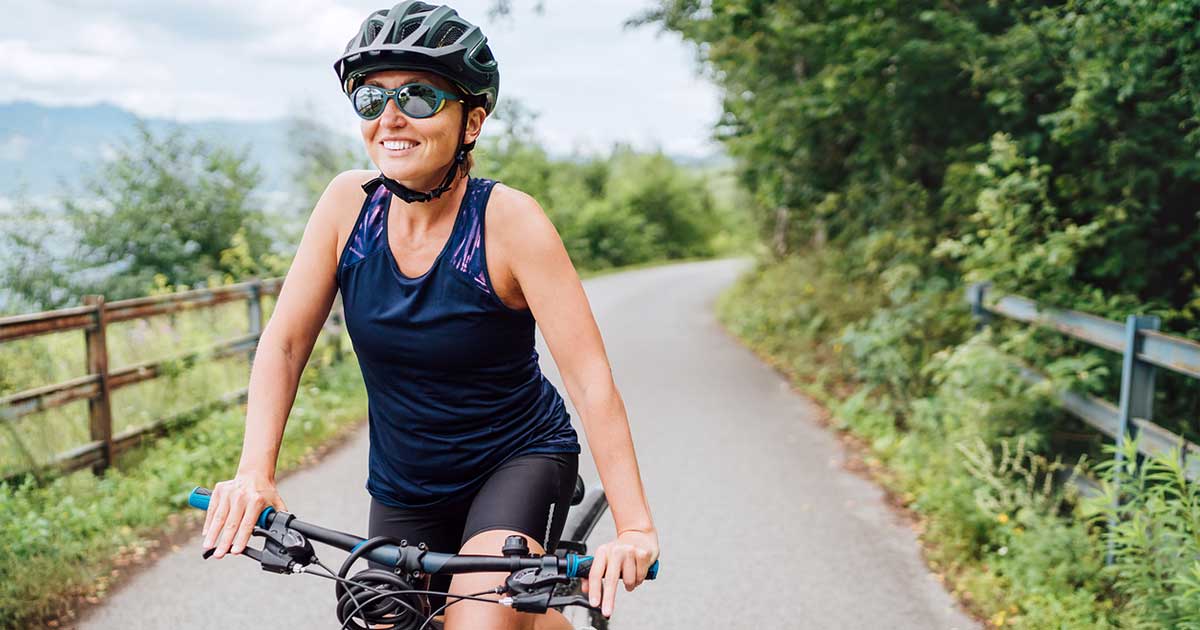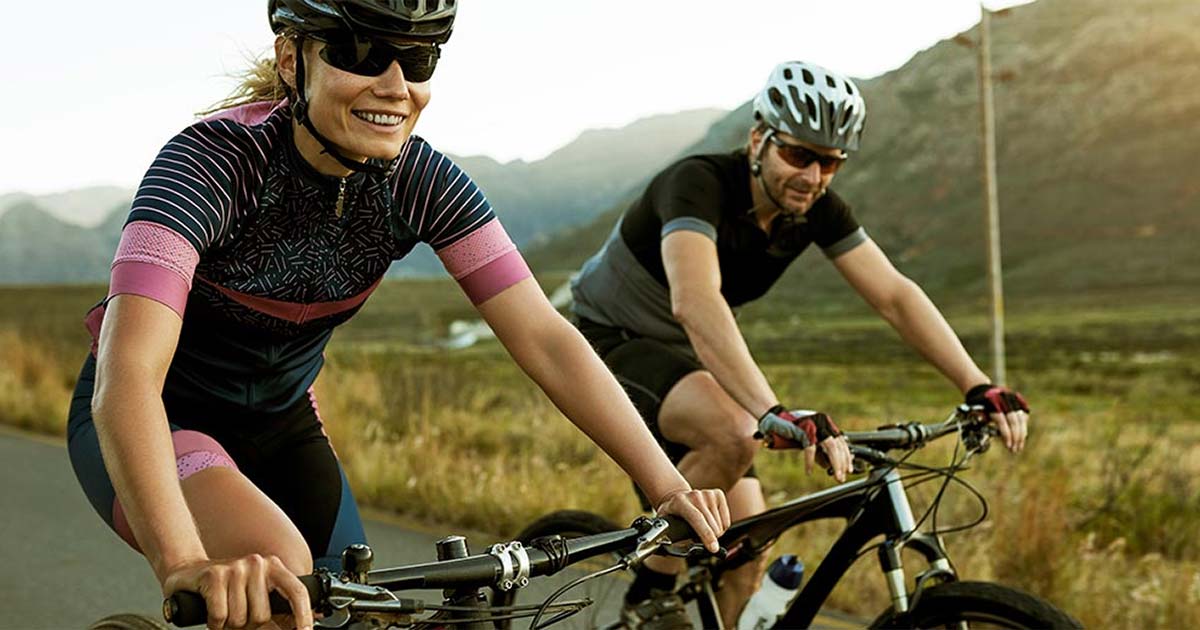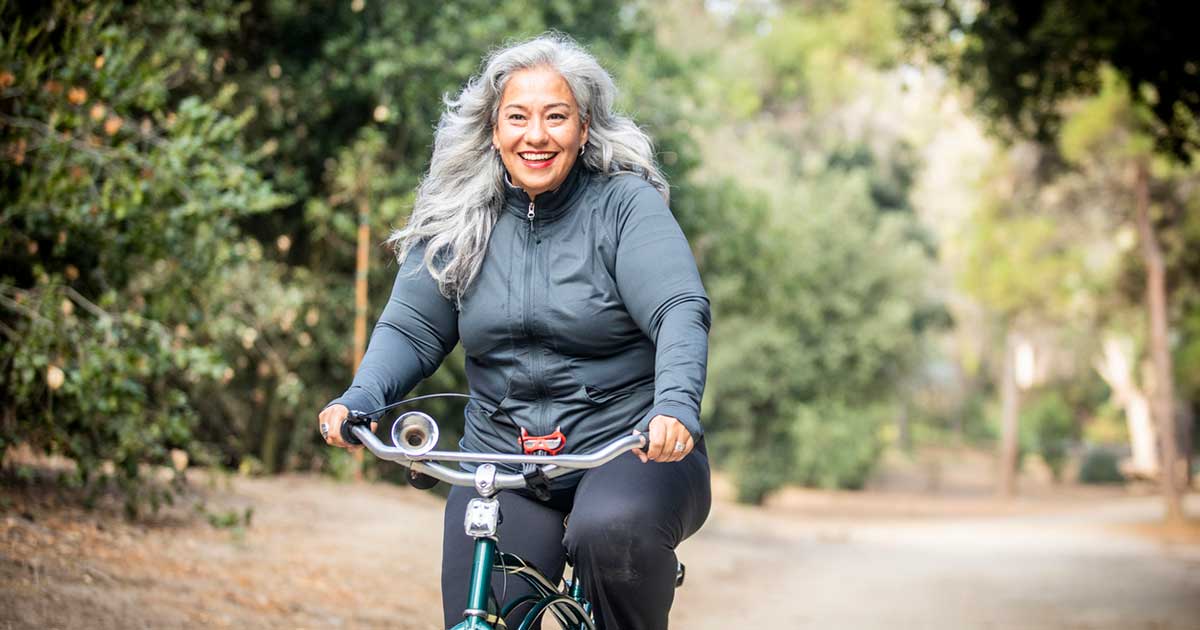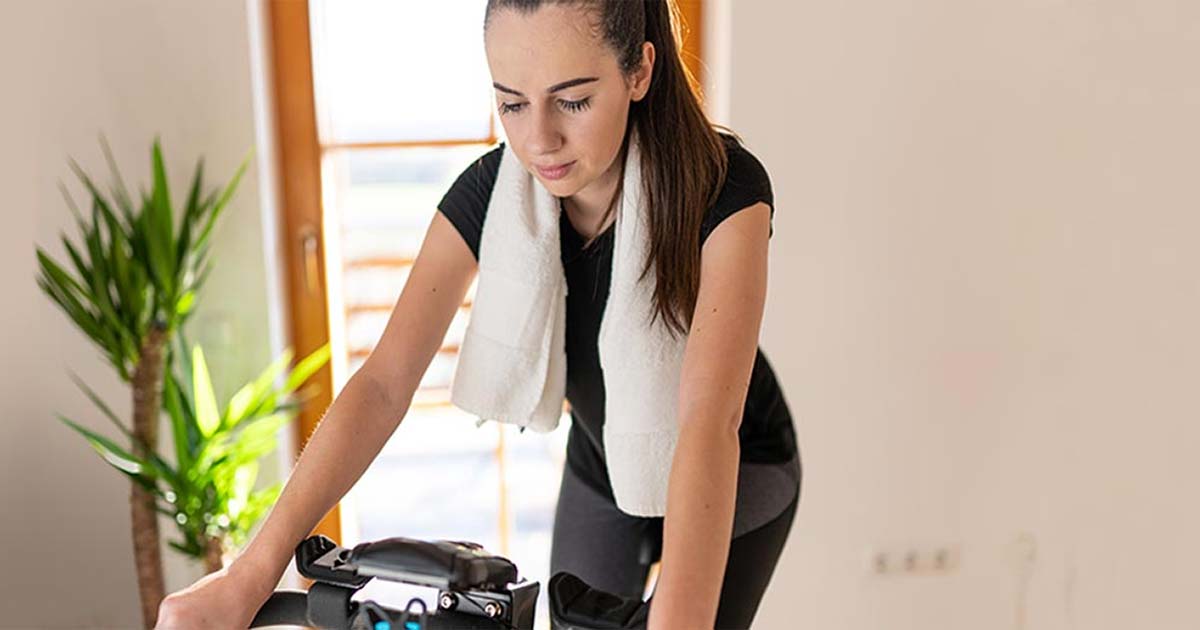
Advice to improve your movement, fitness, and overall health from the #1 in orthopedics in the U.S.
What to Know about Cycling and Wrist Pain
Hand and wrist expert Michelle Carlson highlights the little-known risks of recreational cycling—and some simple ways to stay safe.
Advice to improve your movement, fitness, and overall health from the #1 in orthopedics in the U.S.

“What may surprise people is that seemingly small things like incorrect positioning on the handlebars can lead to hand and wrist pain—or aggravate existing conditions,” says Michelle Carlson, MD, an orthopedic surgeon who specializes in hand and wrist issues at HSS in Manhattan and Florida. “This is true for riders of all ages.”
One such condition is carpal tunnel syndrome. The carpal tunnel, found in the palm, contains the medial nerve, which goes from the thumb to the ring finger. Resting too much weight on this area while cycling can result in symptoms such as pain when moving the wrist and/or numbness and tingling in the fingers. “This condition is very common, and riders of all ages and all levels of fitness can develop it,” says Dr. Carlson. The ulnar nerve, which runs to the pinky, can also be irritated by too much pressure.
Don’t let fears of possible wrist issues keep you out of the saddle, though, says Dr. Carlson. “Cycling is an efficient form of cardiovascular exercise, and it’s a great low-impact alternative to running that’s easier on your joints.”
Instead, use her tips below for healthier wrists before, during and after rides.
Check the fit of your bike
To protect your wrists, you’ll need to start with the right bike. Triathlon and other racing bikes force you to lean forward, which can stress your wrists and aggravate arthritis or nerve pain in the neck. If you’re not a competitive cyclist, a better bet is a bike that allows you to sit up fairly straight. It’s never a bad idea to have a professional at a local bike shop help you find the right fit, but here’s a quick look at how to check the setup. (Hint: It isn’t much different from that of an indoor exercise bike, which you should adjust properly, too.)
- Have your seat at hip height. Your saddle should be roughly at the height of your hipbones as you stand next to the bike. When you sit on the bike with your feet on the pedals, your knee should be slightly bent when the pedal under it is pushed all the way down.
- Adjust the handlebars to suit your body. When your hands are in position, your wrists should be straight, your elbows should have a slight bend, your shoulders should be relaxed (not hunched by your ears), your spine should be neutral (not rounded), and your head should be in line with your back (not hanging down).
Get the right kind of gear
Dr. Carlson gets lots of questions about wearing wrist guards for protection when riding. Her take? Don’t do it. “Wearing wrist guards while riding can impair braking and steering, which could potentially increase the likelihood of a fall,” she says. Instead, try soft handlebar grips or biking gloves padded with gel or foam to provide some extra cushion for the palm area.
And of course, always wear a helmet that meets the latest safety standards. (Dr. Carlson suggests visiting the Snell Foundation’s website for guidance.)
Shift position when you ride
It’s easy to start to slump when you get tired or are chatting with a fellow rider. You’ll need to make a conscious effort to keep your wrists in proper form.
- Adjust your grip often. Change hand positions on the handlebars frequently. Make sure your wrists are straight at all times. Experiment to see what feels best to you.
- Ease up on your palms. Lift yourself up if you start to sink into them heavily. Your core strength—not your hands—should be keeping your torso in position.
- Don’t ignore numbness. If you start to feel tingling in your palm or fingers, don’t ignore it: Change your grip right away. If you don’t, it could take months for the numbness to go away. Repeated nerve damage can also harm the muscles in the hand, which can’t be undone.
When to see a doctor
If you have arthritis, taking an anti-inflammatory before and/or after riding can help prevent or relieve pain, says Dr. Carlson. But what if wrist pain or numbness won’t go away?
If that happens when you’re riding, head home ASAP. If you still notice it the next day, make a doctor’s appointment. Those symptoms may have many underlying causes, such as cysts, arthritis, tendinitis, or carpal tunnel syndrome. Each is treated in different ways, and in general, the earlier a condition is diagnosed, the better.
You don’t need to see your family doctor first, adds Dr. Carlson. For issues like these, it’s best to see a hand-and-wrist surgeon because they have a deeper knowledge of these complex and important body parts.
Published 4/27/2021


